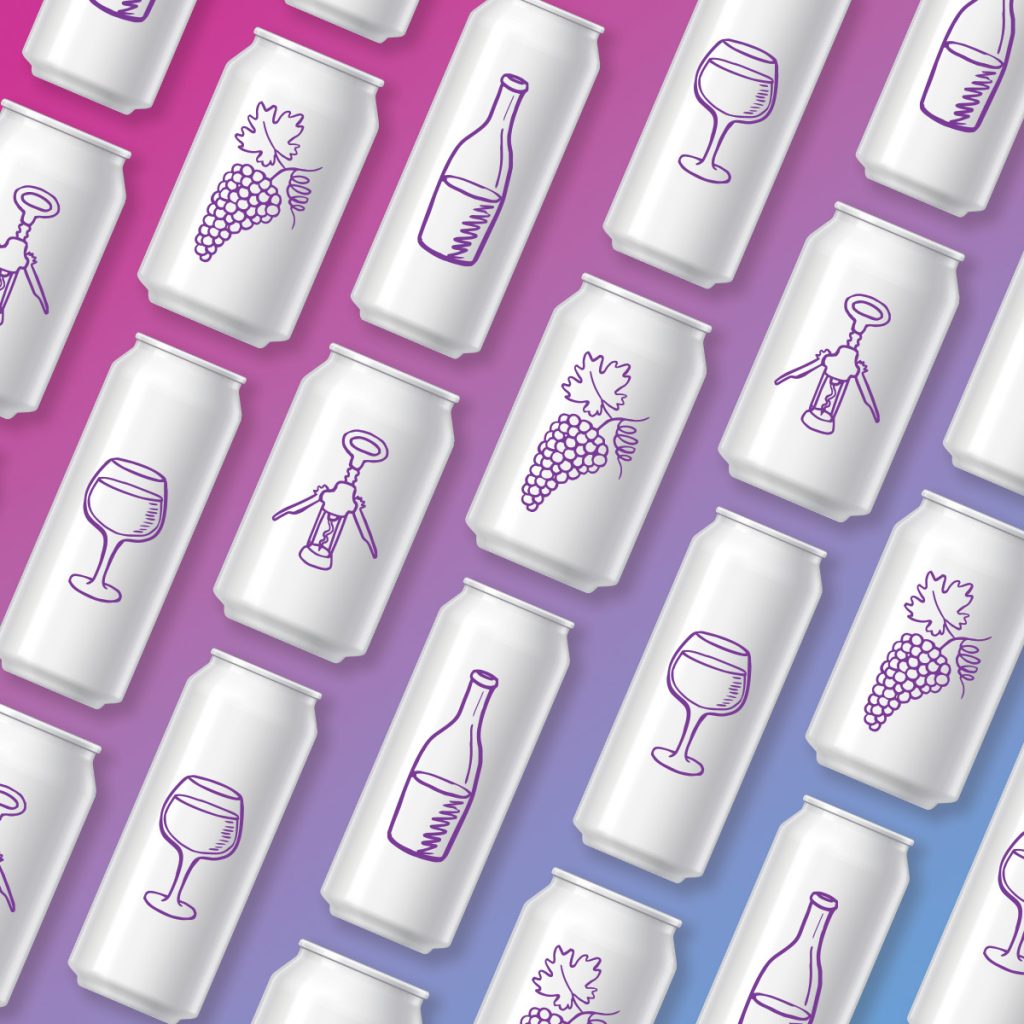Canned wine has been gaining tremendous popularity over the past few years, and it’s not hard to see why. It’s often less expensive, more convenient, and eco-friendly. As more and more consumers embrace the trend, it’s important for grocery stores to be prepared. In this blog post, we’ll explore the future of canned wines and why grocery stores should make room for them on their shelves.
Experts predict that the global canned wine market will be valued at 571.8 million by 2028, expanding at a compound annual growth rate (CAGR) of 13.2%. The lockdown periods of the pandemic contributed significantly to the popularity of canned wine, but these products have only continued to gain traction during the recovery period, for a number of reasons.
Convenience: Canned wine is easy to transport, making wine much more accessible for picnics, barbecues, concerts, and other outdoor events. The number of US participants in outdoor events each year has grown by over twenty million since 2018, an increase of fifteen percent in five years, making this an increasingly significant market for portable products. Canned wines are also a great option for people who want to enjoy a glass of wine without having to open a whole bottle.
Sustainability. Unlike traditional wine bottles, which are often made of glass and require a lot of energy to produce and transport, canned wine is lightweight and recyclable. This means that it has a smaller carbon footprint and is better for the environment, an increasingly high priority for producers and consumers alike.
Cost. Despite maintaining a high level of quality, canned wine is often less expensive. Savings from packaging and transport can be passed onward, while competition between producers may also help depress prices for the foreseeable future. When consumers are watching their wallets, trends like canned wine can become supercharged.
What does the future look like for canned wine? This glass is definitely half full.
More options. As more and more people become aware of the benefits of canned wine, we have seen the number of premium canned wines increase, as well as organic and biodynamic options.
Sparkling wines. The sparkling product segment accounted for the largest share of the market in 2020, at more than 66%. This trend is expected to continue.
More producers. Many top players in the wine market have recently announced new canned wine products. Many of these new products are designed to capitalize on multiple trends simultaneously, like canned wine spritzers, further increasing their viability.
In summary, why should grocery stores consider carrying canned wines? First, it’s a growing trend that shows no signs of slowing down. Secondly, grocery stores can appeal to new audiences, such as more active populations or consumers who feel their lifestyle is not conducive to traditional wines. Finally, as consumers become more conscious about their environmental impact, carrying canned wine can show that a store supports sustainability.
